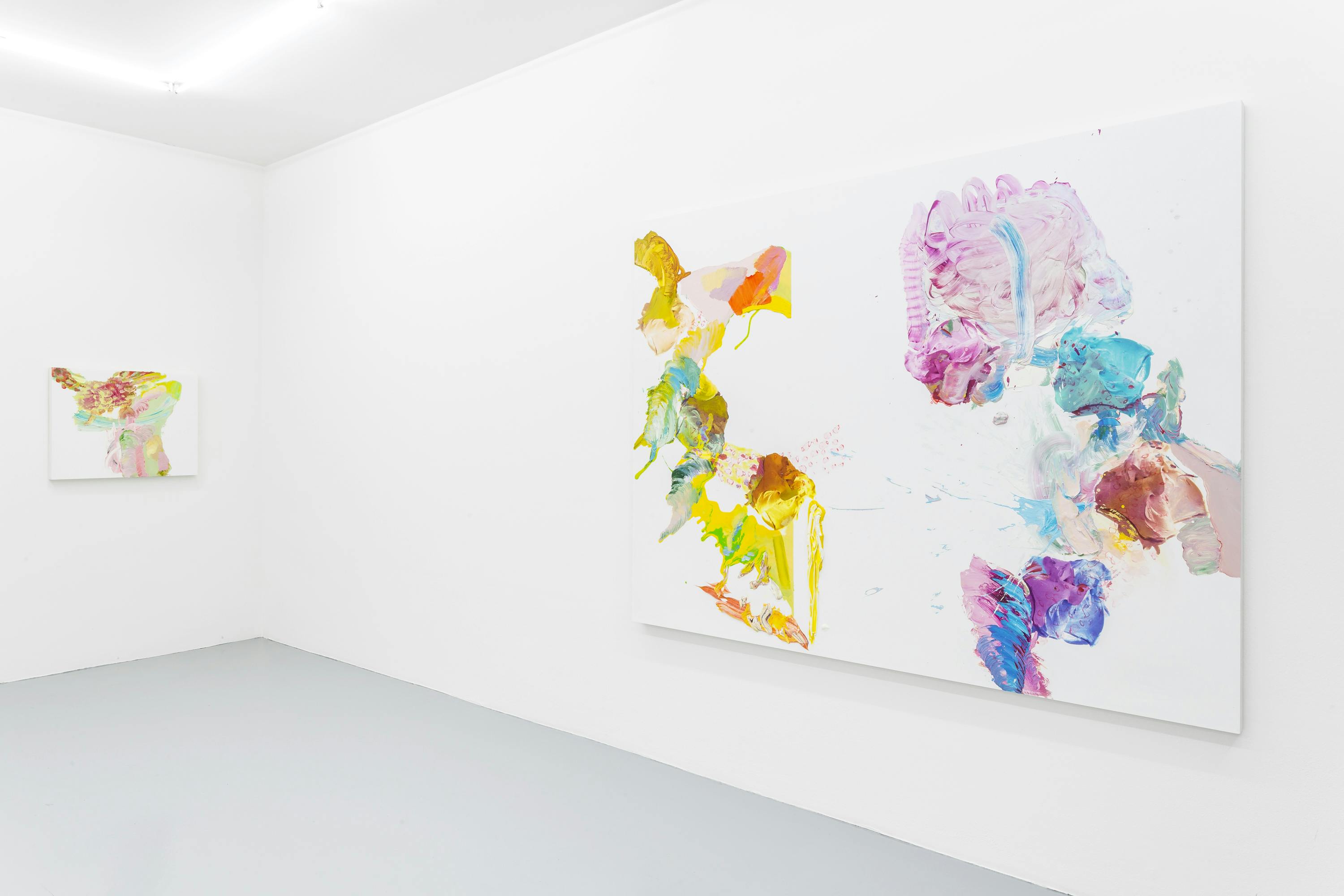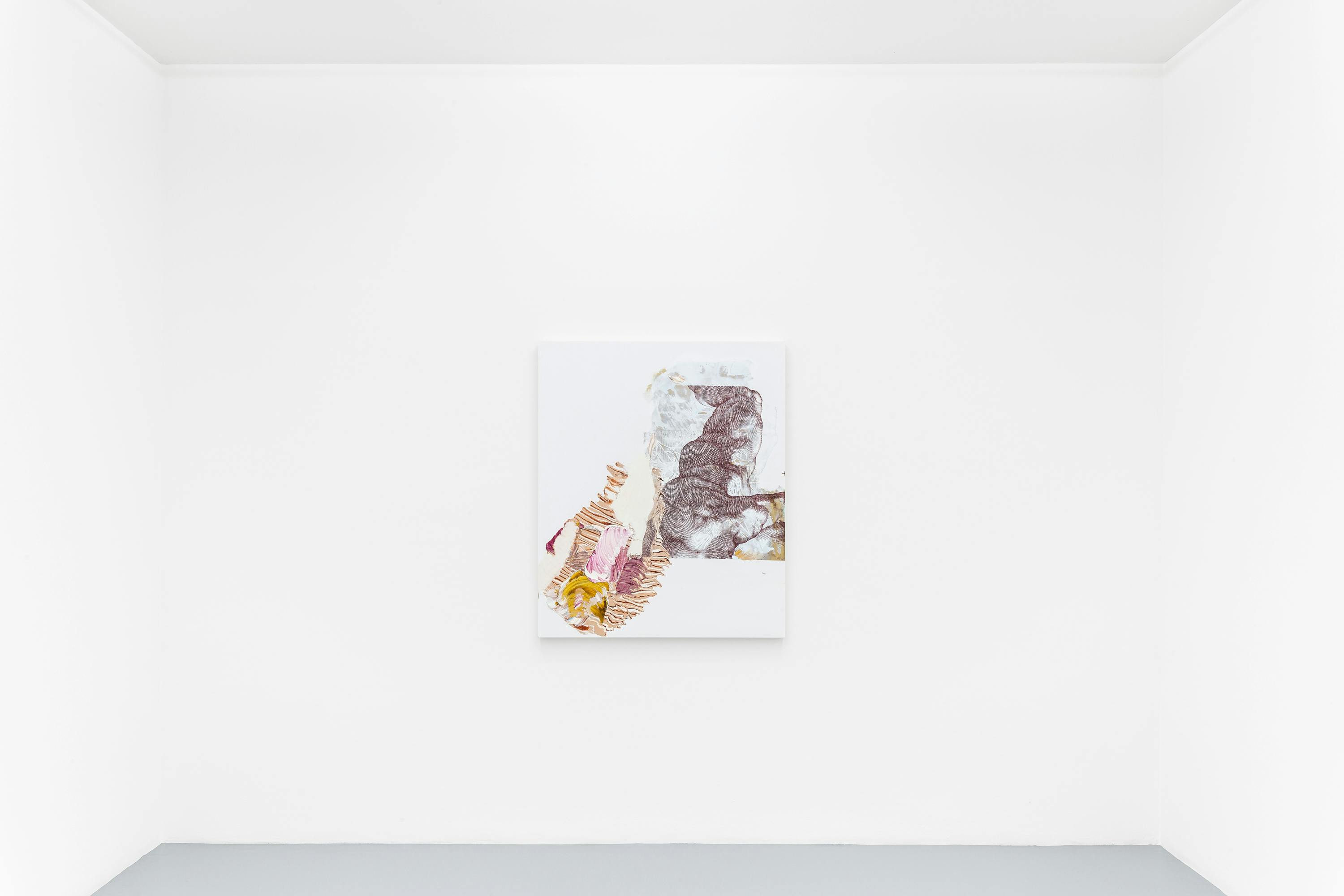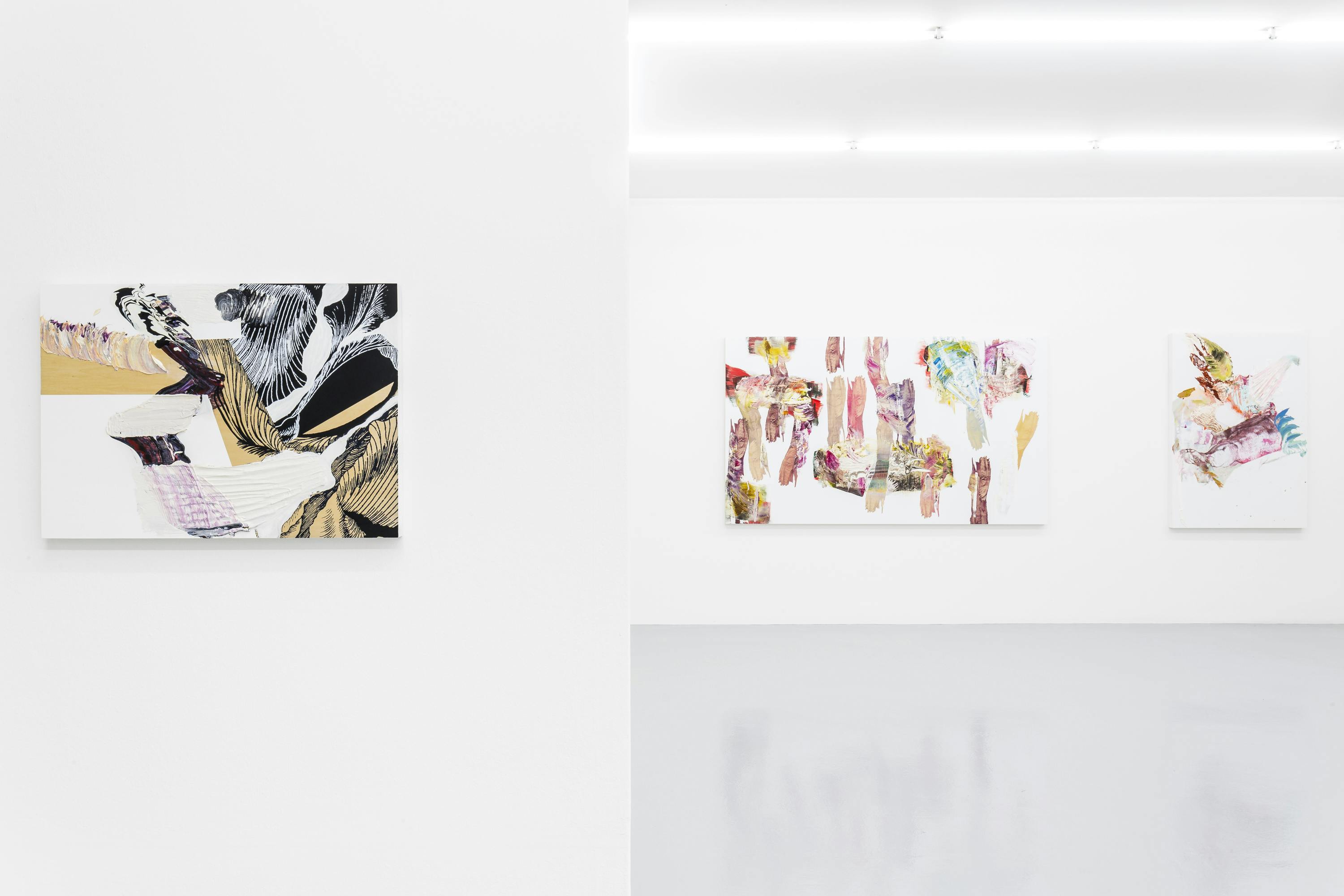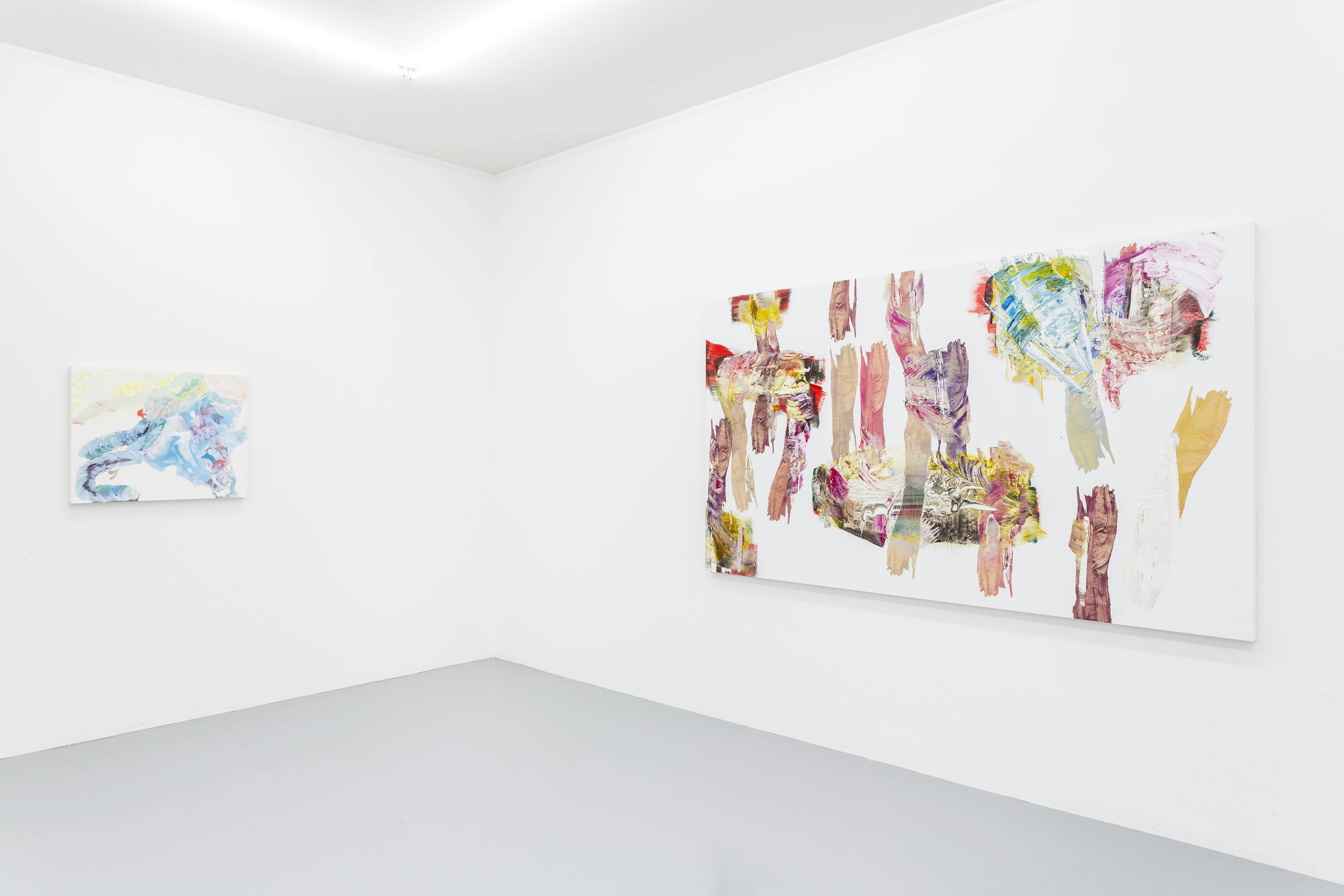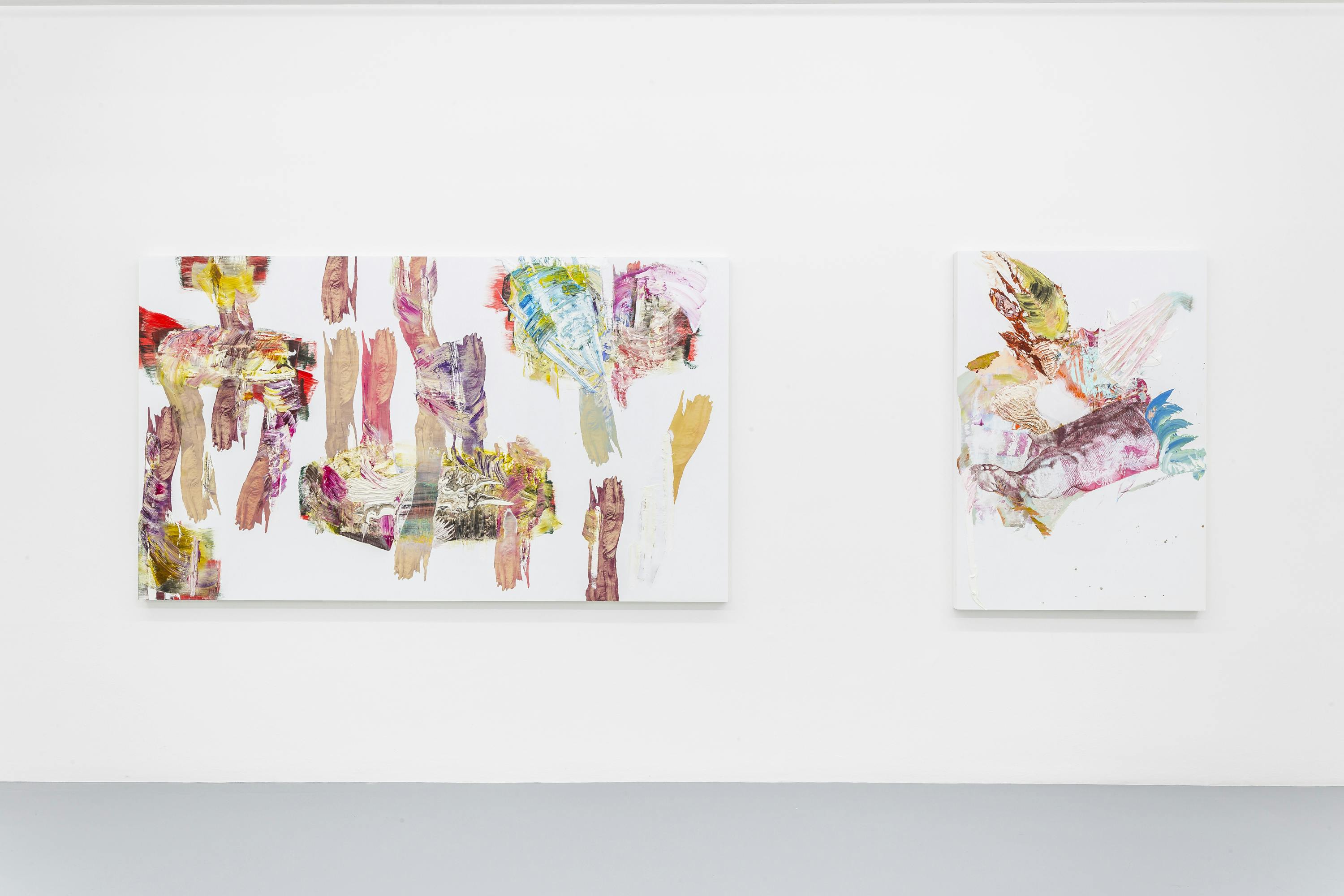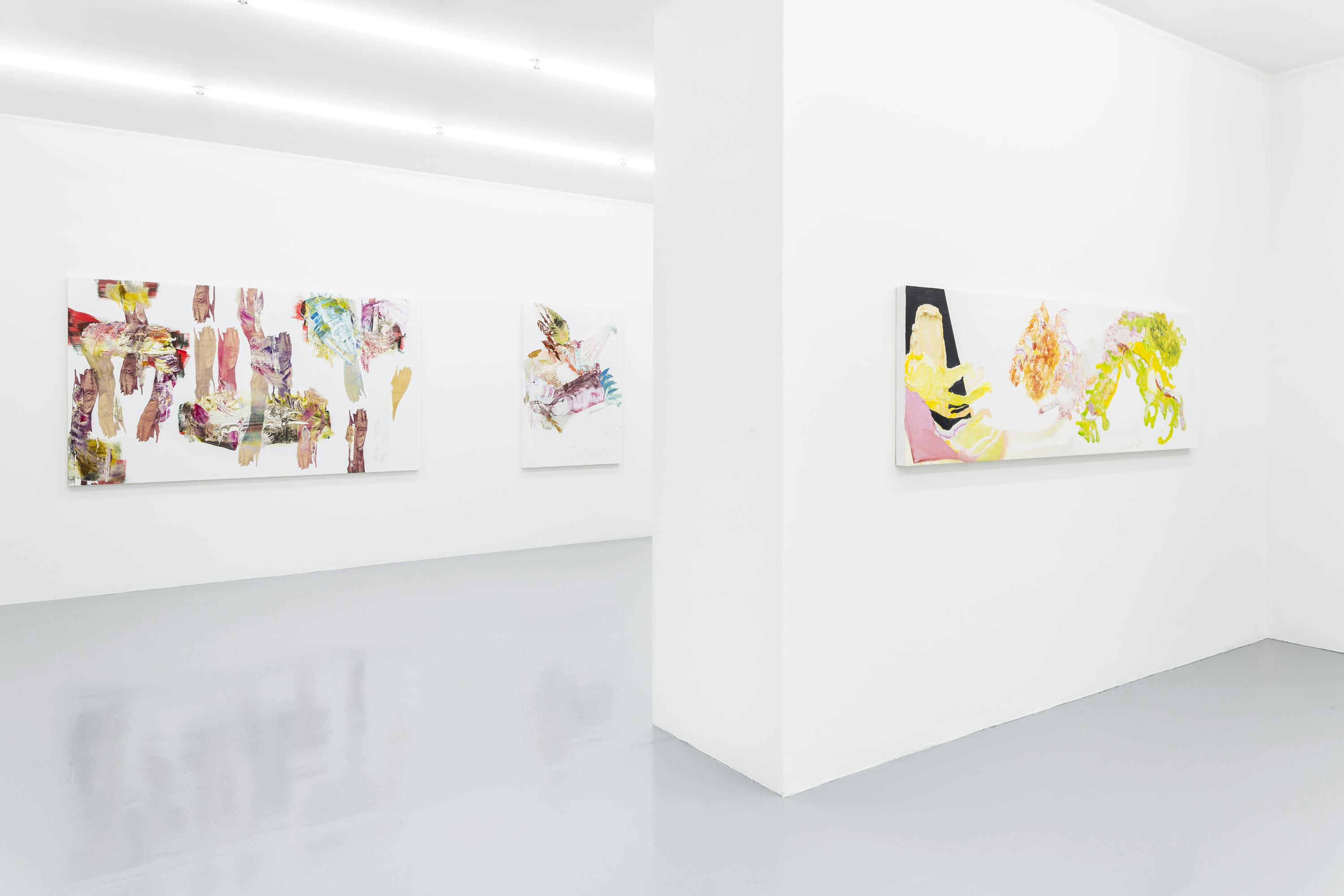Through her international presence in exhibitions worldwide, Pia Fries has become one of the foremost representatives of European abstract painting. Born in the Swiss town of Beromünster in 1955, she now lives and works in Düsseldorf and Munich. A former student in the masterclass of Gerhard Richter, Pia Fries herself has since gone on to teach in a variety of institutions, from Lucerne to Karlsruhe, Düsseldorf and Berlin, and has been a professor of painting at the Akademie der Künste in Munich since 2014. Her works can be found in leading public collections throughout the USA and Europe. Among the many awards she has won, the most recent is the 2014 Art & Culture Prize bestowed by the City of Lucerne.
We are delighted to be able to welcome Pia Fries once again, for her fifth exhibition in our gallery. This time, we present works from different cycles between 2006 and the present day.
Her bold approach to painting reveals colours, forms and structures as individually ordered structures of the self, abandoning all traditional orders and values. Each image follows its own internal logic – seemingly evident to the viewer, yet at the same time utterly inexplicable.
What is also important is the white space that sometimes forms the background, the substructure, or the foreground itself. The pictures are not evenly painted and processed, but contain bundles of colour that sometimes converge and sometimes diverge – yet which invariably reveal their materiality and the diversity of their application; their rhythmic qualities are underpinned by the way the colours flow into one another and permeate the body of the paint itself, as well as, for instance, by the way some areas of still-damp paint are removed and reapplied elsewhere. A wide variety of instruments may be used in the process, lending direction and structure to the work, and emphasising such fundamental physical aspects as the effects of gravity, in particular: turning, tilting and tipping the canvas to influence the flow of paint and the convergence of colours. The white areas offset and highlight the coloured areas, creating the impression that these paintings actually continue far beyond their physical boundaries into the very space in which the viewer stands. Almost impossible to describe in words, these works generate a compelling visual dynamic in which, on the one hand, the gaze is drawn to the apparently evident directions and structures, while on the other, the colours themselves seem to reach out towards the viewer with tangible plasticity.
For some time now, Pia Fries has also been using found images, which she silkscreens onto the canvas, sometimes repeatedly, as both the starting point and extension of her cycles and series of works. For instance, in one series, she uses the exuberantly manieristic tumbling bodies by the Dutch painter and engraver Hendrick Goltzius (1558 – ca.1617). Works from this series can be seen in the exhibition Windhand Laufbein at akku Kunstplattform in Emmenbrücke, in the Canton of Lucerne. (Text: Axel Jablonski)






